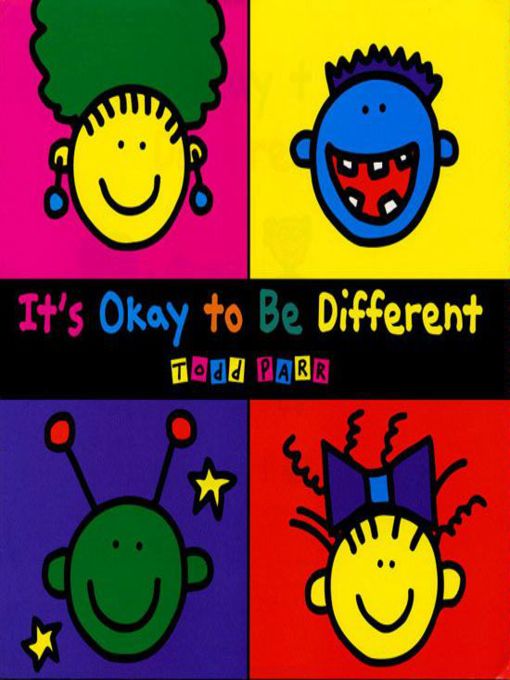
It's Okay to Be Different
کتاب های مرتبط
- اطلاعات
- نقد و بررسی
- دیدگاه کاربران
نقد و بررسی

August 27, 2001
Parr (The Okay Book) combines rainbow colors, simple drawings and reassuring statements in this optimistic book. His repetitive captions offer variations on the title and appear in a typeface that looks handcrafted and personalized. A fuschia elephant stands against a zingy blue background ("It's okay to have a different nose") and a lone green turtle crosses a finish line ("It's okay to come in last"). A girl blushes at the toilet paper stuck to her shoe ("It's okay to be embarrassed") and a lion says "Grr," "ROAR" and "purrr" ("It's okay to talk about your feelings"). Parr cautiously calls attention to superficial distinctions. By picturing a smiling girl with a guide dog ("It's okay to need some help"), he comments on disability and he accounts for race by posing a multicolored zebra with a black-and-white one. An illustration of two women ("It's okay to have different Moms") and two men ("It's okay to have different Dads") handles diverse families sensitively—this could cover either same-sex families or stepfamilies—and also on the opposite page, a kangaroo with a dog in its pouch ("It's okay to be adopted"). He wisely doesn't zero in on specifics, which would force him to establish what's "normal." Instead, he focuses on acceptance and individuality and encourages readers to do the same. All ages.

October 1, 2001
PreS-Gr 2-Parr preaches the message of self-acceptance and tolerance of others. Readers are encouraged to accept differences in physical characteristics, abilities, and family situations. "It's okay to be adopted." "It's okay to wear glasses." "It's okay to have a different nose" and "It's okay to come in last [in a race]." Some differences are of a less serious nature. "It's okay to eat macaroni and cheese in the bathtub," and "It's okay to have a pet worm." The accompanying illustrations feature both animals and children. "It's okay to need some help" shows a girl with a seeing-eye dog. The illustration for "It's okay to be a different color" shows a black-and-white zebra with one whose stripes are multicolored. The pictures are as simple as the message. A childlike mood is established with crudely drawn figures outlined with thick black lines and colored with solid, flat, bright colors. The text is printed in a font that mimics hand printing. The simplicity of presentation masks some of the difficult and complex issues connected with acceptance that children face. However, assurances that differences are okay do not tell children how to deal with being teased or excluded because of differences, and there are no suggestions for adapting play to include those with disabilities. However, the book could serve as a vehicle for beginning a discussion on mutual respect.-Adele Greenlee, Bethel College, St. Paul, MN
Copyright 2001 School Library Journal, LLC Used with permission.

























دیدگاه کاربران